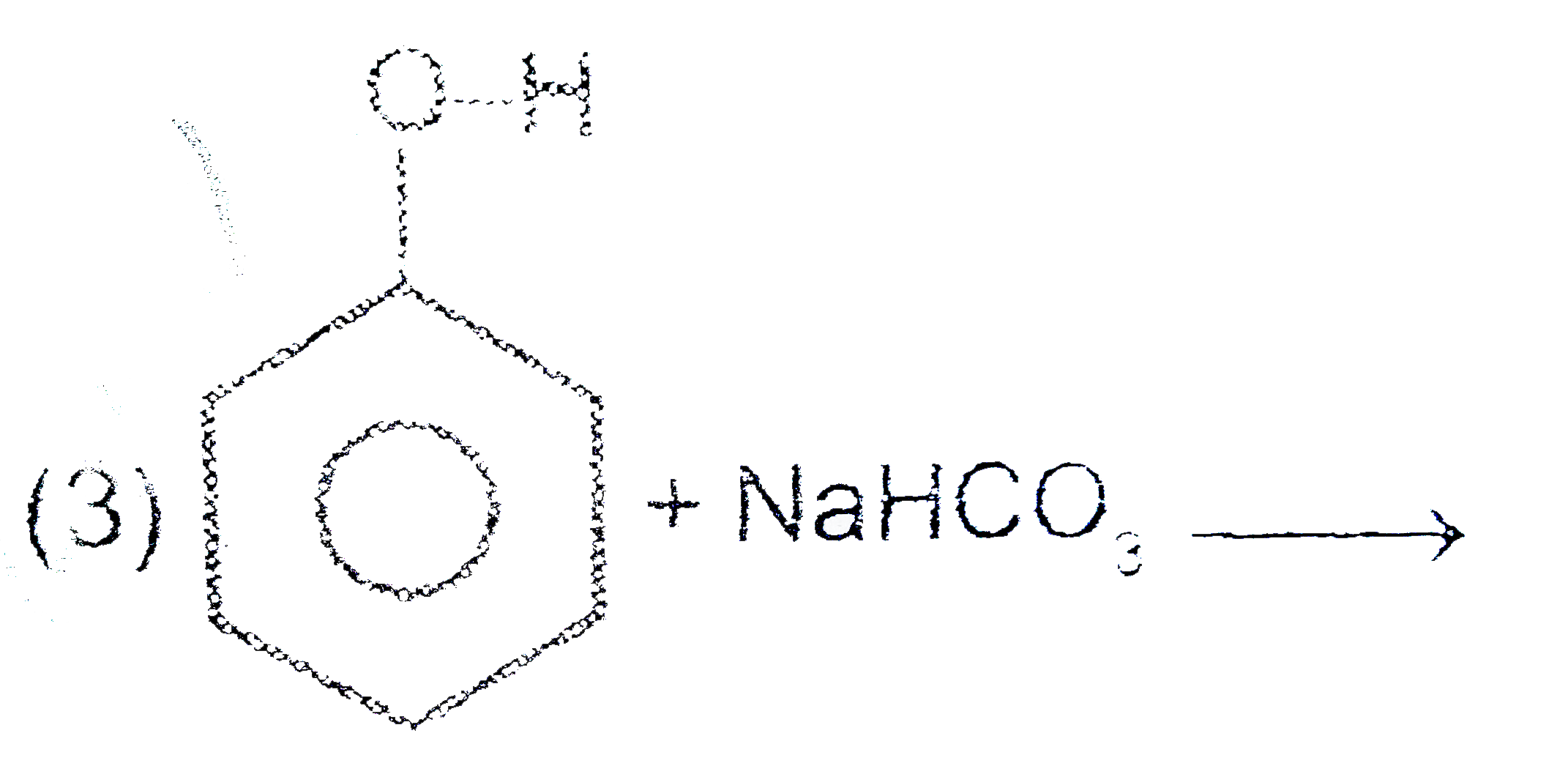(CH3)3CMgCl on reaction with D2O produces
(CH3)3CD
(CH3)3OD
(CD3)3CD
(CD3)3OD
The correct Answer is:A
To determine the product of the reaction between (CH₃)₃CMgCl (a Grignard reagent) and D₂O (heavy water), we can follow these steps:
Step 1: Identify the Reactants
The reactants are:
- (CH₃)₃CMgCl (a Grignard reagent)
- D₂O (heavy water)
Step 2: Understand the Nature of Grignard Reagents
Grignard reagents are highly reactive organomagnesium compounds. In (CH₃)₃CMgCl, the carbon atom (C) bonded to magnesium (Mg) has a partial negative charge due to the electronegativity difference between carbon and magnesium. Thus, we can represent it as:
- C δ- (carbon with a partial negative charge)
- Mg δ+ (magnesium with a partial positive charge)
Step 3: Ionization of D₂O
D₂O can ionize to produce:
- D⁺ (deuterium ion)
- OD⁻ (deuteroxide ion)
Step 4: Reaction Mechanism
In the reaction, the carbon atom (C) of the Grignard reagent will attack the D⁺ ion from D₂O, while the magnesium ion (Mg) will bond with the OD⁻ ion.
Step 5: Write the Products
The products of the reaction will be:
- The carbon will bond with D, forming (CH₃)₃C-D.
- The magnesium will bond with the deuteroxide ion, forming Mg(OD)Cl.
Thus, the overall product can be represented as:
- (CH₃)₃C-D + Mg(OD)Cl
Final Product
The main product of the reaction is:
- (CH₃)₃C-D (tert-butyl deuteride)
- Mg(OD)Cl (magnesium deuteroxide chloride)
Summary of the Reaction
The reaction of (CH₃)₃CMgCl with D₂O produces:
- (CH₃)₃C-D (tert-butyl deuteride)
- Mg(OD)Cl
---
The reactants are:
- (CH₃)₃CMgCl (a Grignard reagent)
- D₂O (heavy water)
Grignard reagents are highly reactive organomagnesium compounds. In (CH₃)₃CMgCl, the carbon atom (C) bonded to magnesium (Mg) has a partial negative charge due to the electronegativity difference between carbon and magnesium. Thus, we can represent it as:
- C δ- (carbon with a partial negative charge)
- Mg δ+ (magnesium with a partial positive charge)
D₂O can ionize to produce:
- D⁺ (deuterium ion)
- OD⁻ (deuteroxide ion)
In the reaction, the carbon atom (C) of the Grignard reagent will attack the D⁺ ion from D₂O, while the magnesium ion (Mg) will bond with the OD⁻ ion.
The products of the reaction will be:
- The carbon will bond with D, forming (CH₃)₃C-D.
- The magnesium will bond with the deuteroxide ion, forming Mg(OD)Cl.
- (CH₃)₃C-D + Mg(OD)Cl
The main product of the reaction is:
- (CH₃)₃C-D (tert-butyl deuteride)
- Mg(OD)Cl (magnesium deuteroxide chloride)
The reaction of (CH₃)₃CMgCl with D₂O produces:
- (CH₃)₃C-D (tert-butyl deuteride)
- Mg(OD)Cl
Similar Questions
Knowledge Check
Me3CMgCl on reaction with D2O produces :
AMe3CDBMe3CODC(CH3)3CDD(CH3)3COD
Me3C−MgCl on reaction with D2O produces :
View SolutionThe reaction of compounf P with CH3MgBr (excess) in (C2H5_(2)O followed by addition of H2O give Q the compound Q on treatment with H2SO4at 0∘ C gives R. the reaction of R with CH3COCl in the presence of anhydrous AlCl3inCH2Cl2 followed by treatment with H2O produces compound S. [Et in compound P is ethyl group] The product S is

View SolutionThe reaction of compounf P with CH3MgBr (excess) in (C2H5_(2)O followed by addition of H2O give Q the compound Q on treatment with H2SO4 at 0∘ C gives R. the reaaction of R with CH3COCl in the presence of anhydrous AlCl3 in CH2Cl2 followed by treatment with H2O "produces compound S. [Et in compound P is ethyl group]
The reaction, Q to R and R TO S, are
View SolutionConsider the following reactions
I.
II.(CH3)2C∣OH−CH2−CHOΔ−−→
III. (CH3)2CHCH2−C∣FH−CH3CH3O−Na+−−−−−−−−−−→Δ
IV. (CH3)2CH−C∣BrH−CH3(CH3)3CO−k+−−−−−−−−−−→
Which of these reaction will not produce Hoffmann product?
View SolutionCaC2O4↓+CH3COOH→No reaction
View SolutionCaC2O4↓+CH3COOH→No reaction
View SolutionIn how many reactions CO2 gas is released out after reaction with NaHCO3
(1) CH3−O∣∣S∣∣O−O−H+NaHCO3→
(2) CH3−C∣∣O−O−H+NaHCO3→

CH3−CH2−OH+NaHCO3→
(5) CH3−C≡C−H+NaHCO3→
View Solution
